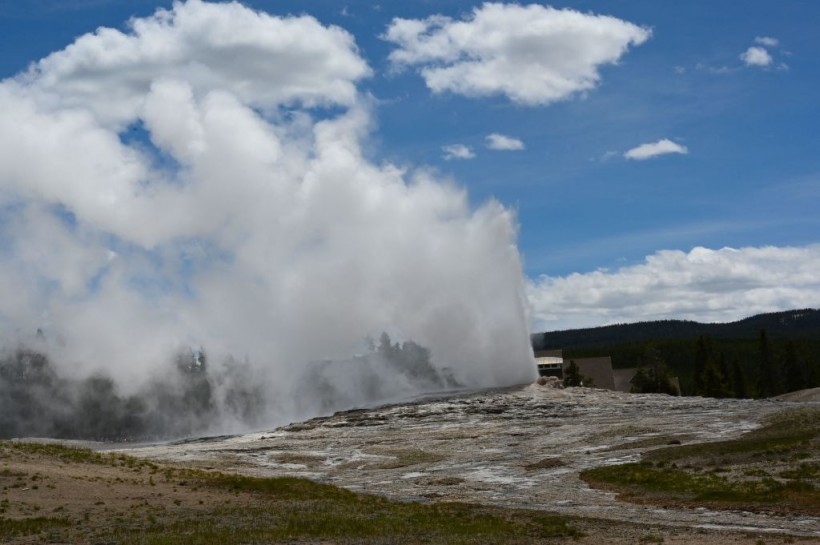The Old Faithful Geyser in Yellowstone National Park is one of the most popular natural attractions in the world.
Millions of visitors come every year to witness its spectacular eruptions, which send hot water and steam up to 180 feet in the air every 90 minutes.
But what most people don't know is that Old Faithful is also home to a diverse and resilient microbial community that lives in its dark and scorching waters. How do these microbes survive and thrive in such an extreme and dynamic environment?
A new study by Lisa M. Keller, published in PNAS Nexus and presented at the Geological Society of America's GSA Connects 2023 meeting, reveals some of the secrets of these amazing life forms.
The Masters of Carbon Fixation
 (Photo : DANIEL SLIM/AFP via Getty Images)
(Photo : DANIEL SLIM/AFP via Getty Images)

The most abundant bacterium in Old Faithful is Thermocrinis ruber, which makes up over 60% of the microbial population.
This bacterium is a chemoautotroph, which means it can make its energy from chemical reactions, without relying on sunlight or organic matter.
Old Faithful is a dark, hot place, which makes photosynthesis impossible. Instead, Thermocrinis ruber takes CO2 outgassing from the geyser and turns it into carbon forms that are potentially cross-feeding heterotrophs in the community, such as Thermus aquaticus.
Both bacteria are extremophiles, which are life forms that thrive where most would not survive.
Thermocrinis ruber and Thermus aquaticus are not only adapted to high temperatures but also to rapid and frequent changes in their environment.
Geysers are extremely dynamic habitats, where the microbes are subject to fluctuating steam and water temperatures that constantly change throughout the eruption cycle.
As if being thrown hundreds of feet in the air every 90 minutes isn't disruptive enough, they also have to deal with variations in pH, salinity, pressure, and oxygen levels.
How do they cope with such challenges? One possible strategy is to diversify their genomes and increase their ecological niches.
Keller found that more strains of Thermocrinis are found in Old Faithful than in any other non-geysing hot spring in Yellowstone.
She suggested that the highly dynamic geyser environment creates many different ecological niches that Thermocrinis can occupy, causing increased sub-species level diversity.
Another possible strategy is to form biofilms-thin layers of microbial cells that adhere to surfaces and protect themselves from environmental stressors.
Keller observed that Thermocrinis ruber forms biofilms on the walls of Old Faithful's conduit-the underground channel that connects the geyser to its water source.
These biofilms may help the bacteria resist erosion and desiccation during eruptions, as well as provide a stable habitat for other microbes.
Keller also found evidence of biofilm formation on the splash pools around Old Faithful, where she sampled another extremophile bacterium called Deinococcus geothermalis.
This bacterium is known for its remarkable resistance to radiation and DNA damage, which may help it survive the high UV exposure in the geyser basin.
Also Read: Mysterious Mechanics of Geysers Unveiled [VIDEO]
The Implications for Astrobiology
The study of microbial life in Old Faithful Geyser has not only implications for understanding the diversity and evolution of life on Earth but also for exploring the possibility of life beyond our planet.
Geysers are considered potential analogs for extraterrestrial environments, such as those on Enceladus, a moon of Saturn that has geysers of water vapor and ice particles erupting from its surface.
By studying how microbes survive and thrive in geysers on Earth, we may gain insights into how life could emerge and adapt in similar environments elsewhere in the solar system.
Old Faithful Geyser is more than just a natural wonder. It is also a living laboratory for studying some of the most remarkable and resilient life forms on Earth-and possibly beyond.
Related article: World's Tallest Geyser Erupts For the First Time in Eight Years at Yellowstone
© 2024 NatureWorldNews.com All rights reserved. Do not reproduce without permission.





